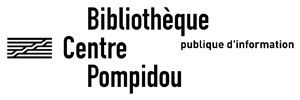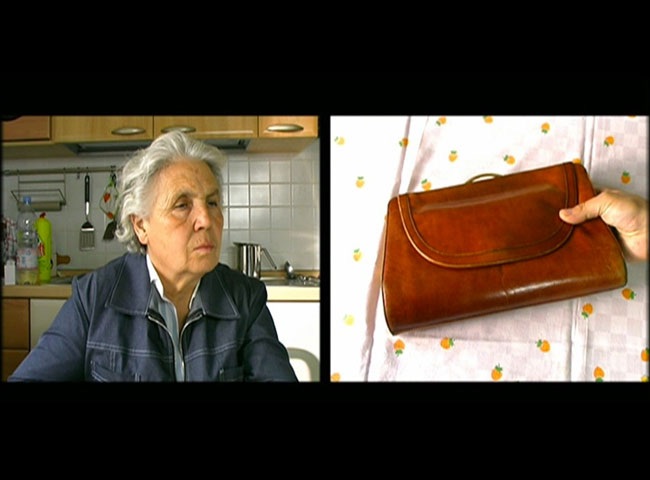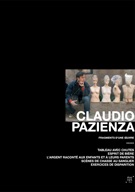L'Argent raconté aux enfants et à leurs parents
-
Réalisé par Claudio Pazienza • Écrit par Claudio Pazienza
-
Belgique, France • 2002 • 53 minutes • Betacam SP • Couleur
- Réalisation :
Claudio Pazienza - Écriture :
Claudio Pazienza - Image :
Rémon Fromont, Vincent Pinckaers - Son :
Irvic d' Olivier - Montage :
Julien Contreau, Michèle Hubinon
- Production (structure) :
Les Films à Lou - Coproduction :
Komplot Films etc. sprl - Diffuseur :
ARTE France, RTBF - Radio Télévision Belge Francophone - Participation :
CNC, Procirep - Ayant droit :
Les Films à Lou
- N° ISAN :
non renseigné
Résumé
En partant de la racine de nos tracas pécuniaires ("pecus" = petit bétail), l’auteur organise son enquête par une cascade de calembours visuels. Si l’agneau vaut l’argent, c’est alors qu’il est un sacrifice. Où place-t-on l’argent ? Dans le sac à main de la mère de Claudio. La petite pièce n’y reste pas, agneau du sacrifice dans une famille d’ouvriers où l’on ne tue pas le veau gras tous les jours. C’est ce que semble ne pas comprendre le professeur de Boissieu, économiste, que l’écran "splité" distingue du réalisateur qui l’interroge, pour bien rappeler que c’est chacun dans son camp, ceux qui peuvent capitaliser et ceux qui n’ont que du corps à vendre. Pour ces derniers, le professeur Auriti, utopiste de province, invente une monnaie d’initiative populaire et imprime des billets qui n’ont cours que dans une seule ville d’Italie... Faire des frais, faire des dettes, faire des enfants. Ce film n’est pas raisonnable. Au final, le philosophe Jean-Paul Curnier met le doigt sur un point brûlant : sans dette, il n’y a pas de lien social. À l’heure du diktat de l’orthodoxie budgétaire, cela fait du bien à entendre.
(Laurent Roth)
There is nothing naive about L'Argent raconté aux enfants et à leurs parents. It is a tragicomedy dealing with debt, ties, filial love and money. In Pazienza's work surrealist collages gratifyingly overthrow the often-vague notion of microeconomics. We enter within this absurd world which is nevertheless ours and in which the most rigorous scientific approach either verges on idiocy or on the plainest common sense. First part : the origins – the filmmaker's family – and the specialists. The first question : where is the money kept ? In mother's handbag. Our actor-film maker, as placid as he is irreverent, questions his relatives, Italian immigrants. A small coin monopolises our attention. He then takes us to Paris where Professor de Boisseux reminds us of the basics of economics. The image is divided in two, separating the economist from Pazienza : on screen as in the worlds, the gap between classes, between theory and practice is widened. The filmmaker comes to his first conclusion : money empowers... or does not. Avoiding debt implies sacrifices ; making sacrifices doesn't avoid one from getting into debt. And debt is shame. Why not print banknotes ? Obviously the ideas is shocking to the governor of the central bank. Second part : the SIMEC (simbolo econometrico) revolution, the invention of Italian Professor Auriti. Let us experiment in situ and in vivo with the creation of this currency worth twice as much as the Lira. The law professor reminds us that all currencies are conventions and that only the circulation of a currency confers upon it an induced value. In a small village in Italy he issues this symbolic money to boost consumer spending. Then follows an epic scene on a platform in a deserted railway station, were Pazienza's parents, incredulous, meet the mad professor and find out that their money is only a bank Ioan ! All this remains very dogmatic for the filmmaker – and for the spectator ! – who literally turns his back on Prof. Auriti's experiment. The final, or almost final word, Pazienza leaves to a philosopher. Another paradox : what if debt was a tie, a necessity for man who lives in society ? In the film, a child – the filmmaker's – is born. It is his turn to embark upon the spiral of debt and ties !
(Bertrand Bacqué)
Collection
Mot(s)-clé(s) thématique(s)
À propos du film
Sélections et distinctions
- 2014 • Images en bibliothèques • Paris (France) • Film soutenu par la Commission nationale de sélection des médiathèques
- 2002 • Filmer à tout prix • Bruxelles (Belgique) •
- 2002 • Visions du réel • Nyon (Suisse) • Compétition Internationale
Comment avoir accès au film ?
- Édition DVD
-
Accès VOD
- Il n'existe pas d'accès en VOD à notre connaissance
- Diffusion non commerciale / Consultation





